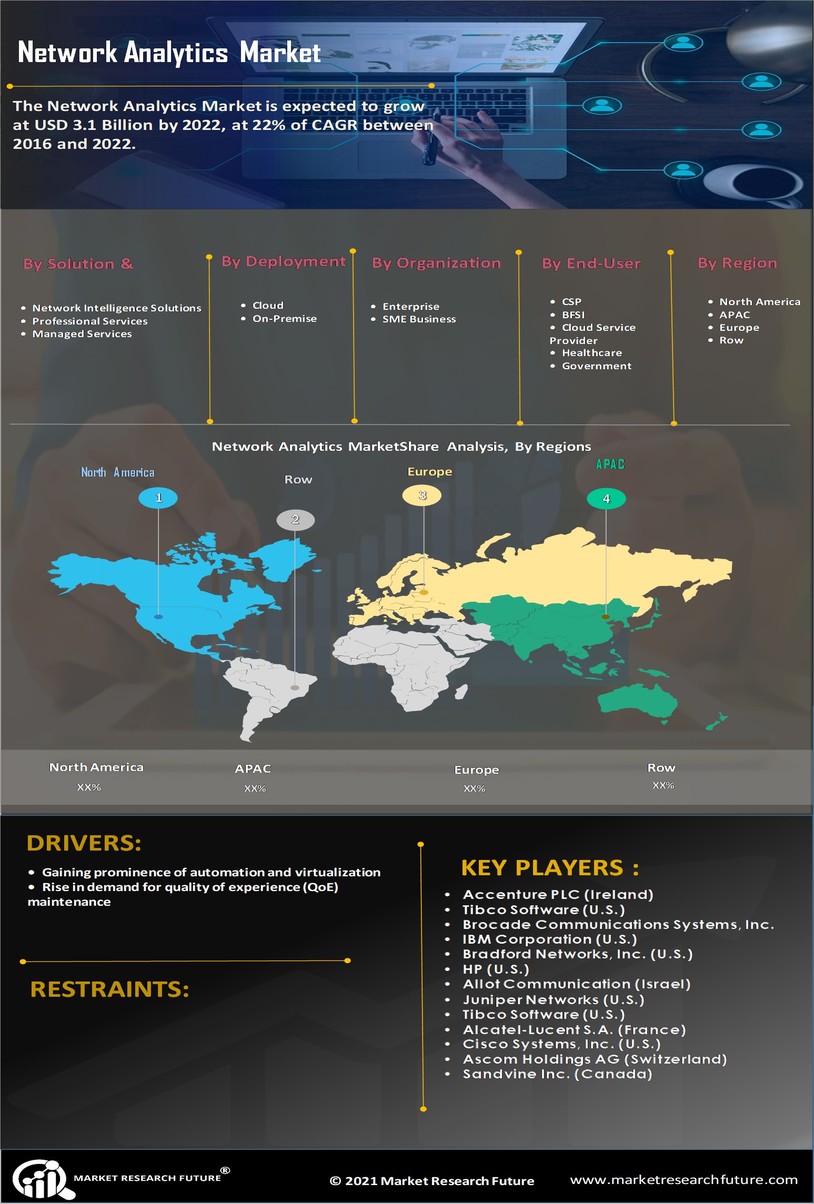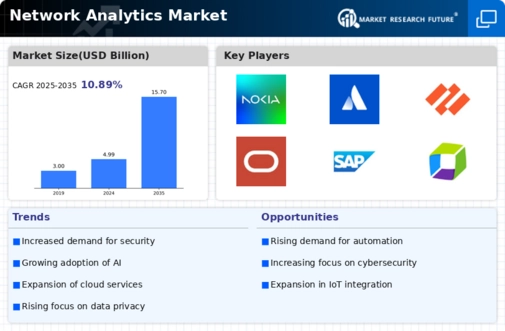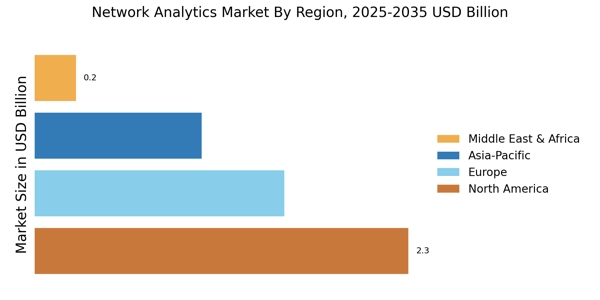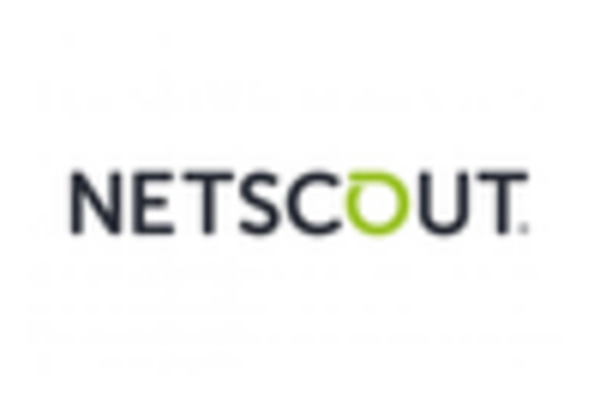Increased Focus on Network Security
In the current landscape, the emphasis on network security is paramount, significantly impacting the Network Analytics Market. Organizations are increasingly investing in analytics solutions to bolster their cybersecurity measures. The rise in cyber threats and data breaches has prompted businesses to adopt proactive strategies, utilizing analytics to detect anomalies and respond to potential threats in real-time. Recent studies indicate that The Network Analytics Market is expected to reach over 300 billion by 2025, highlighting the critical role of network analytics in safeguarding sensitive information. By integrating advanced analytics into their security frameworks, organizations can enhance their threat detection capabilities, thereby reducing the risk of costly breaches and ensuring compliance with regulatory standards.
Growing Need for Network Optimization
The necessity for network optimization is becoming increasingly evident within the Network Analytics Market. As organizations expand their digital infrastructure, the complexity of managing network performance escalates. Analytics tools provide valuable insights into network traffic patterns, enabling businesses to identify bottlenecks and optimize resource allocation. It is projected that the network optimization segment will witness a growth rate of around 20% annually, driven by the need for improved performance and reduced operational costs. By leveraging analytics, organizations can enhance their network efficiency, ensuring seamless connectivity and superior user experiences. This focus on optimization not only supports current operational needs but also prepares organizations for future scalability.
Emergence of IoT and Connected Devices
The proliferation of Internet of Things (IoT) devices is significantly influencing the Network Analytics Market. With billions of devices connected to networks, the volume of data generated is unprecedented. This surge in connectivity necessitates robust analytics solutions to manage and analyze the data effectively. It is estimated that by 2026, the number of connected devices could reach over 30 billion, creating a pressing need for advanced network analytics tools. These tools enable organizations to monitor device performance, ensure security, and optimize network resources. As IoT continues to expand across various sectors, including healthcare, manufacturing, and smart cities, the demand for sophisticated analytics solutions will likely intensify, driving further growth in the Network Analytics Market.
Rising Demand for Data-Driven Insights
The Network Analytics Market is experiencing a notable surge in demand for data-driven insights. Organizations are increasingly recognizing the value of leveraging analytics to enhance operational efficiency and decision-making processes. According to recent estimates, the market is projected to grow at a compound annual growth rate of approximately 25% over the next five years. This growth is driven by the need for businesses to analyze vast amounts of data generated from network activities, enabling them to identify trends, optimize performance, and improve customer experiences. As companies strive to remain competitive, the integration of advanced analytics tools into their network management strategies becomes essential. This trend not only supports real-time monitoring but also facilitates predictive analytics, allowing organizations to anticipate potential issues before they escalate.
Adoption of Cloud-Based Analytics Solutions
The shift towards cloud-based analytics solutions is reshaping the Network Analytics Market. Organizations are increasingly migrating their analytics capabilities to the cloud, attracted by the flexibility, scalability, and cost-effectiveness that cloud solutions offer. This transition allows businesses to access advanced analytics tools without the burden of extensive on-premises infrastructure. Recent forecasts suggest that the cloud analytics market could exceed 100 billion by 2025, indicating a robust trend towards cloud adoption. As companies seek to harness the power of big data and real-time analytics, the demand for cloud-based solutions is likely to grow. This trend not only enhances collaboration across teams but also enables organizations to respond swiftly to changing market dynamics.


















Leave a Comment